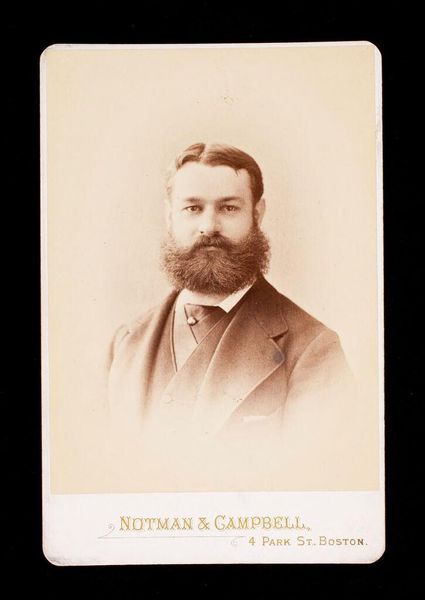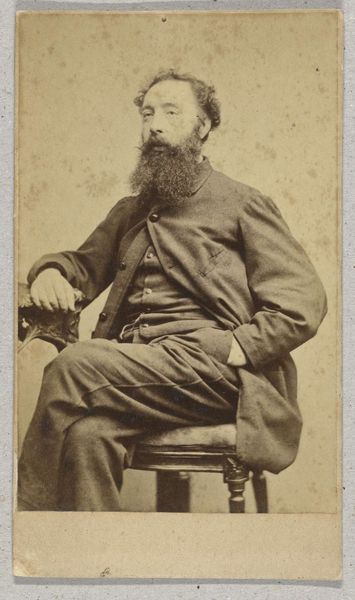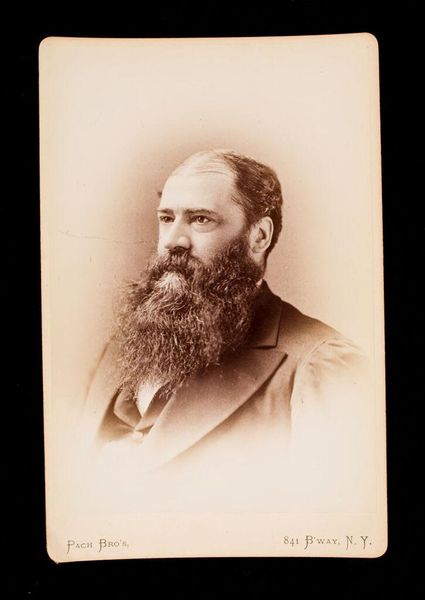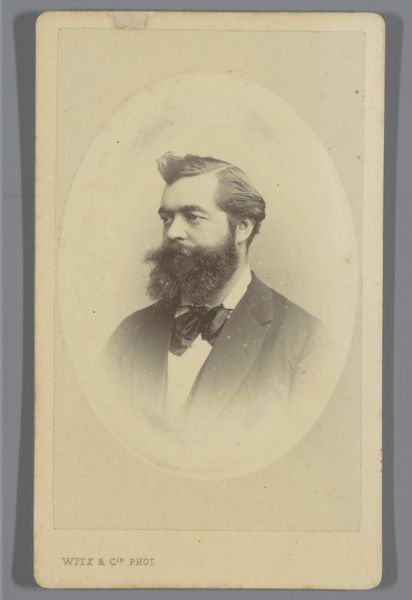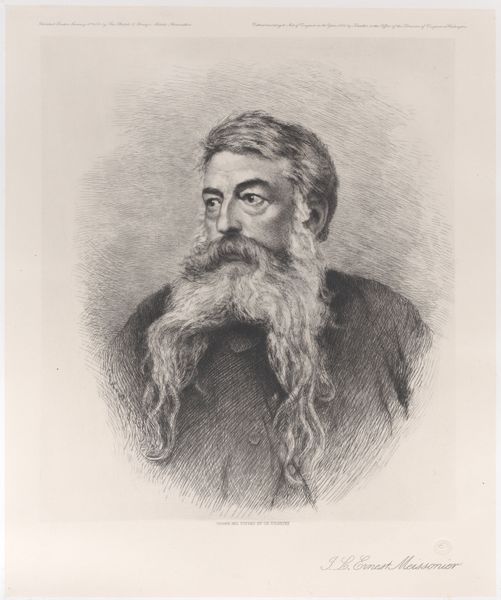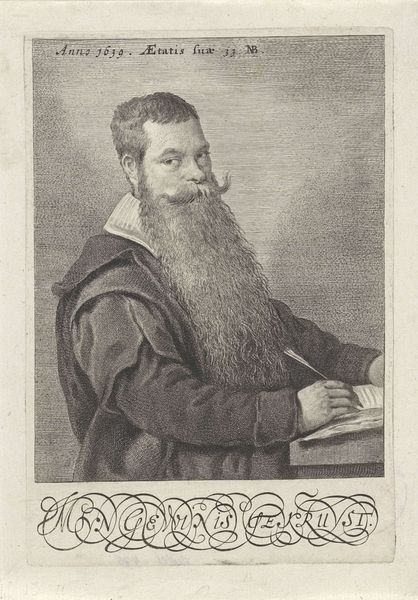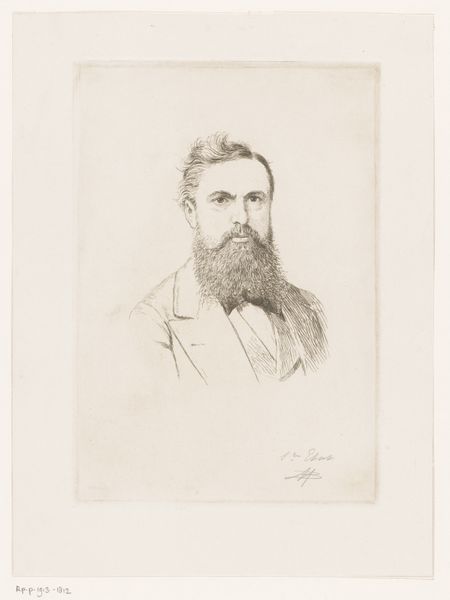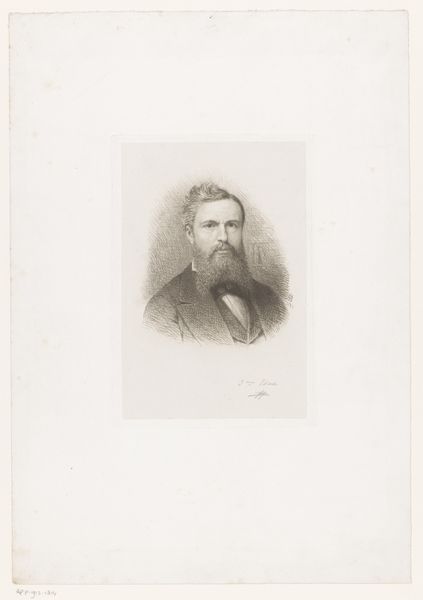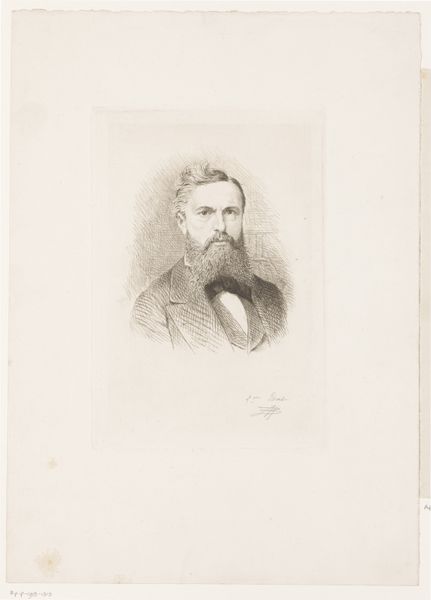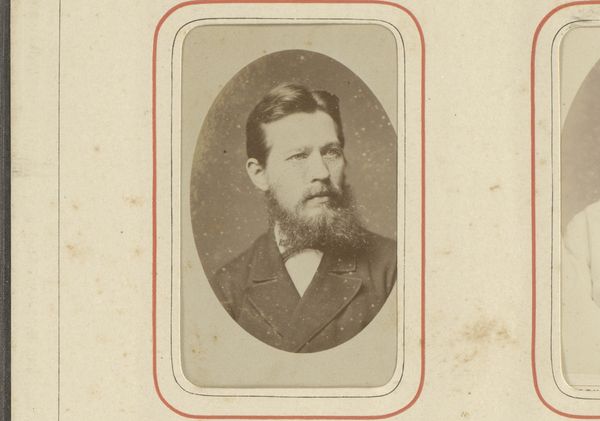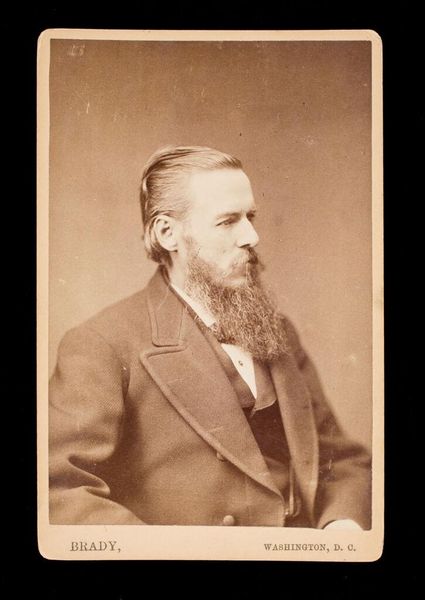
drawing, dry-media, graphite
#
portrait
#
pencil drawn
#
drawing
#
facial expression drawing
#
light pencil work
#
pencil sketch
#
charcoal drawing
#
dry-media
#
portrait reference
#
pencil drawing
#
graphite
#
portrait drawing
#
pencil work
#
graphite
#
realism
Dimensions: height 170 mm, width 123 mm
Copyright: Rijks Museum: Open Domain
Curator: Immediately, the stark, almost melancholic gaze of the subject pulls me in. The dense beard adds such texture, framing his face. Editor: Yes, it is a portrait of a man with a beard, looking towards the left, potentially drawn in 1887 by Johannes Jacobus Paling. The materiality is compelling—it seems primarily rendered with graphite and other dry media. I'm curious about Paling's choice to use these materials; paper and graphite were widely available and affordable. Was he interested in reaching a wider audience, or was this merely an economical choice for the artist? Curator: I think we also need to consider the late 19th-century portraiture conventions. A somber expression might signify more than just the man’s personal state. Think of the prevalent philosophical and societal shifts. Was he part of the emerging bourgeoisie, grappling with new social roles? What's intriguing is the apparent disjunction between the precision of the lines around his face and the seeming randomness in the mass of the beard. Editor: True, the beard is like a dense material entity in itself. It almost overwhelms the figure, right? I want to zoom in on how Paling created those textures with such simple tools. You can almost feel the individual strokes and layers of graphite. It highlights labor; consider how the creation becomes a mark of value through intensive work in graphite and paper, then, versus photography, which was getting cheaper, what does that signify for the worth placed upon human artisanship and its relation to economy and class? Curator: The beard itself might have signified rebellion or intellectual prowess at the time, maybe? It contrasts with his almost stern expression and tailored jacket. It represents the male identity of the time, but, at the same time, questions what that identity might have implied back then. How the gaze shifts between power and vulnerability. Editor: Exactly. And look at the almost mass-produced aspect of the drawing technique, replicated graphite lines versus hand-painted individuality of past centuries! Think about how many other such images Paling might have made; he makes a product here to reach a potential audience. That's crucial. Curator: The picture complicates things; on one hand, the subject asserts certain traditional notions of masculinity and seriousness, but the drawing itself provides clues for disrupting them too. Editor: And that is why seeing it in terms of materials and work helps ground those abstractions. Thanks for guiding us here! Curator: Thank you; you framed some helpful contextual analysis too!
Comments
No comments
Be the first to comment and join the conversation on the ultimate creative platform.
